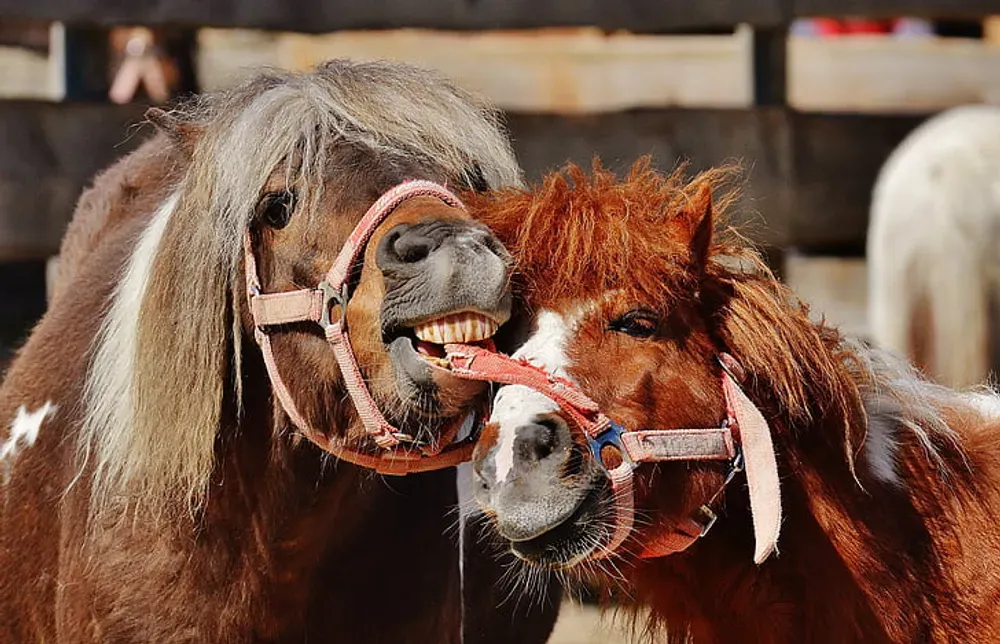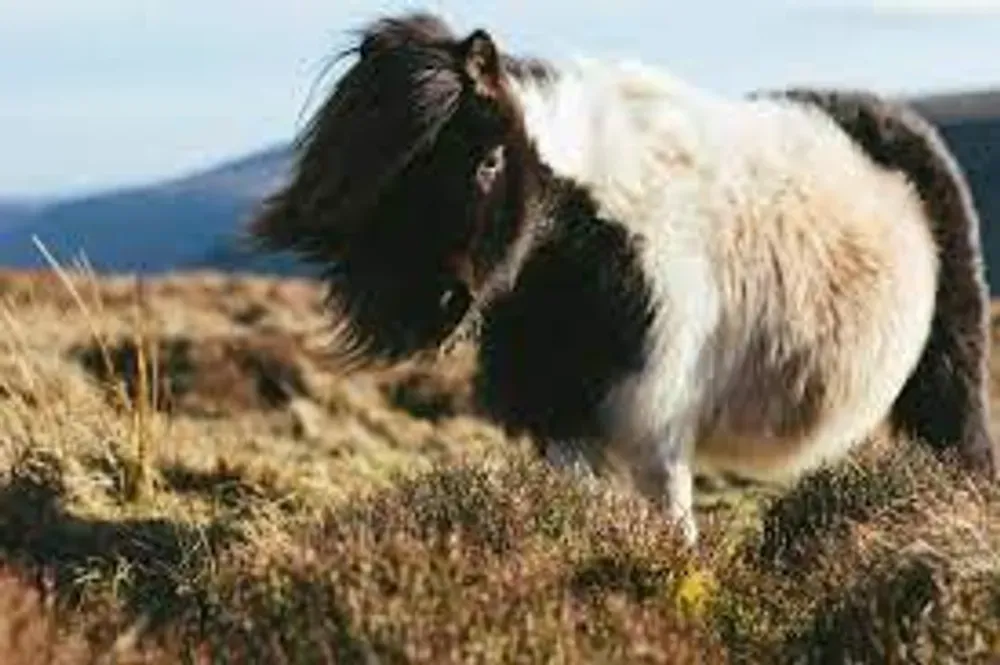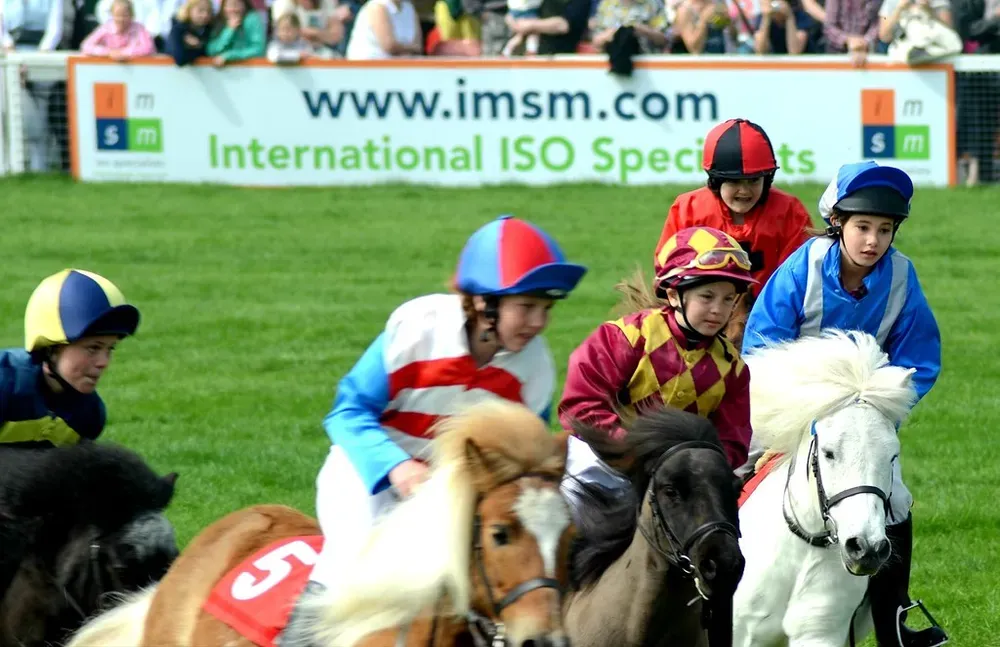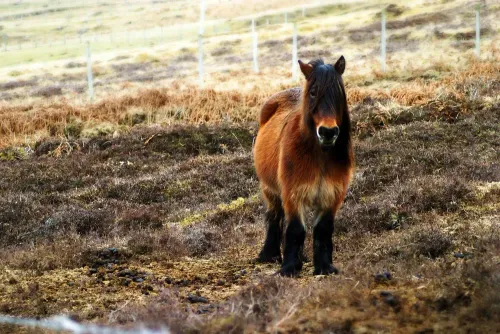
Table of Contents
The Shetland Pony: A Stalwart of the Shetland Isles
Origins: Shetland Ponies, as the name suggests, hail from the Shetland Islands, located off the northeastern coast of Scotland. These sturdy little equines have a long and storied history on the islands dating back at least the last 2000 years, where they have adapted to the harsh and unforgiving environment.
The origins of the Shetland Pony are somewhat unclear, but it is widely believed that they are descendants of Scandinavian ponies brought to the islands by early Viking settlers. It is also possible that Shetland ponies have an older history dating to the end of the last ice age and that they became isolated when the sea levels rose. Whatever their origins, the harsh conditions of the Shetland Isles contributed to their diminutive size and remarkable resilience.
The Shetland Breed Characteristics
Size: Shetland Ponies are renowned for their small stature, with a height of just 28-42 inches (7-10.2 hands). Their small size is a result of generations of adaptation to the challenging Shetland environment.
Personality: Despite their small size, Shetland Ponies possess strong and independent personalities. They are known for their intelligence and curiosity, which can make them challenging to handle if not properly trained and socialised from a young age. Shetlands are active and very inquisitive which often keeps their human owners “on their feet”.
Appearance: Shetland Ponies come in a variety of coat colours and patterns, including bay, chestnut, black, and pinto. They have a thick, double coat to keep them warm during the harsh Shetland winters.

Shetland Pony wearing its Winter Coat
The long, dense mane, tail and coat are very water-repellent and extremely insulating against harsh Winter conditions in the remote Shetland Isles.
Shetland ponies have not increased in height when bred in mild lowland conditions!
It is conjectured that the breed could be a dwarf variety of the equine species.
Shetland Pony: Previous Uses and Endearing Qualities
These resilient ponies were primarily used for practical purposes. Their small size and incredible strength made them invaluable for the Shetland Island crofters where they served as pack animals, carrying peat and seaweed in baskets, pulling carts and assisting with transportation of goods. The ponies' gentle nature and surefootedness were crucial attributes that enabled them to fulfil their roles in a demanding environment. Sadly they were also used as pit ponies in coal mines on the mainland where their harsh coal mining duties were served underground.
A 1842 law preventing women and children from working in mines affected Shetland ponies!
After this time Shetland ponies were in great demand as pit ponies because they could work in confined spaces. Coal mines used pit ponies up until the 1960's!
However, their appeal wasn't limited to the workplace. Shetland ponies gained recognition for their friendly and pleasant personalities. This led to their popularity as family pets and even as subjects for children's literature. Their charming appearance and amiable demeanour endeared them to people far beyond the shores of the Shetland Islands. Shetland ponies are still bred on the Shetland Isles although there are numerous stud farms located across the British Isles.
Shetland patronage from the late Queen Victoria!
Queen Victoria of the United Kingdom had a soft spot for Shetland ponies and in the mid-19th century popularised the breed.
Shetlands in Scurry Driving
As time progressed and industrialisation transformed work methods, Shetland ponies found new roles in leisure activities, one of which was scurry driving. Their small size made them a natural fit for this use, and they quickly became favourites among the elite for small-scale, picturesque drives. Their presence in carriage driving events always added a touch of elegance and a dash of cuteness to the equine world.
The Shetland Grand National: A Unique Equestrian Spectacle
One of the most thrilling chapters in the history of Shetland ponies is their involvement in the Shetland Grand National. This event, often held during horse racing fixtures in the UK, features young riders and their Shetland ponies racing over miniature steeplechase fences.
The spectacle combines adorable, high-spirited ponies and the competitive spirit of young jockeys. It's a heartwarming and exhilarating display of horsemanship that has captured the imagination of audiences for years.

Shetland Ponies Racing
These ponies enjoy their races and are a pleasure to behold.
Did you know Shetland ponies are able to carry heavy loads?
Yes relative to their size they are considered to be very strong. It is typical for a Shetland to be able to carry 25% of its fit body weight. Many horse can only carry 20% of their fit body weight.
The Surprising Strength of Shetland Ponies
For such small equines, Shetland ponies possess astonishing strength. They have to navigate the rugged terrain of the Shetland Islands, and their muscular builds reflect this adaptability. For their diminutive size, shetland ponies are very stocky with short backs and considerable bone “below the knee”.
A Shetland Pony Health Challange
However, their size can also be a factor in certain health challenges. Shetlands are prone to obesity and laminitis, which need to be carefully managed by controlling their calorific intake. Shetlands do not thrive on rich grazing and are at their best when living out on restricted grazing. Nevertheless, , their robustness and ability to thrive in challenging conditions make them a true testament to the resilience of the equine spirit.
The take-home Message
Shetland ponies are true equestrian treasures, showcasing their agility, speed, and tenacity in Scurry Driving and the Shetland Grand National classes. These events provide a platform for enthusiasts to celebrate the extraordinary capabilities of Shetland ponies, fostering a sense of community and camaraderie among participants. Remember that the Shetland ponies are very hardy and must not be overfed for fear of developing laminitis and EMS and like all equines thrive best when they have a job to do.
FAQs
Can adults ride Shetland ponies?
Are Shetland ponies good for inexperienced horse owners?
Do I need to rug my Shetland pony in Winter?
Are American Shetlands the real thing?
Can Shetland ponies be kept in hot climates?

Article Suggestion
Exploring the Mystique of the Highland Pony
